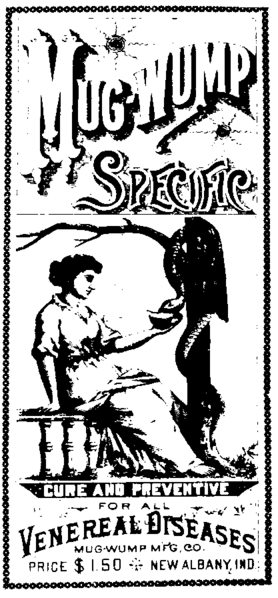Venereal disease

Venereal diseases are infections spread through sexual contact. What is special about such diseases is the germs that cause them- these particular infectious agents, whether they be bacteria, viruses, or other types of microorganisms, can only remain infectious if kept at the conditions that exist inside a living person. Unlike the common cold, once they leave the body's warm environment, with its supples of oxygen and nutrients and living cells, they can neither survive or transform into spores. They can infect solely by passing directly from one body into another. When the term, "venereal disease" was coined, in the 19th century, sexual activity was the only "intimate" means of sharing body fluids that occured with any regularity. Since that time, with the advent of blood transfusion, organ transplant, and groups of substance abusers who share hypodermic equipment for injecting drugs, some of the same fastidious organisms that could only survive transmission from an infected person to a new host through sexual contact, are now also able to survive through these other forms of transport.
Some venereal diseases can be passed from an infected mother to her baby: either during pregnancy, birth, or through breastfeeding. This fact has changed the utility of breastfeeding in some areas, like sub-Saharan Africa, where the rate of HIV, which is transmitted in breast milk is very high. It also had an influence on the social mores of Europe, where, after syphilis became epidemic in the 15th century, women warned their daughters about the dangers of marrying the wrong man lest the children bring tragedy.
Sexually transmitted diseases (STD) include both the venereal diseases and other infections. These other kinds of infections can be spread in many ways, but are so likely to be transmitted by sexual contact with an infected person that they are included in the category. This article reviews the history and significance of the venereal diseases in human society.
Venereal disease of bacterial origin
Syphilis
Syphilis in historical perspective
As far as recorded history is concerned, syphilis made its debut in 15th century Europe. Whether it came from the sailors returning from the new world, or from a new strain of a locally established organism is unknown. What is known is that "the great pox" began and, by the 17th century, epidemics of syphilis had not only spread through the population of Europe but had been carried by travelling Europeans to other areas of the world. In the early centuries of syphilis infections that disease was as devastating as a later epidemic of sexually transmitted illness, AIDS, has been. The incidence and prevalence of syphilis rose dramatically after every war, beginning with the Neopolonic and ending with War World II.
By the middle of the 20th century, antibiotics had become available and syphilis became easily curable- at least in its early stages. Penicillin, along with public education, changed the demographics of the disease. In the United States, because of "widespread screening and treatment by the Surgeon General Thomas Parran after the Second World War, reported cases of primary and secondary syphilis dropped to an all-time low in 1955." However, rates did rise again showed a 10-year cycle of rising and falling in a fairly regular fashion.
"In North America and the developed countries of northern Europe, syphilis had become predominately a disease of homosexual men by the 1970s. During the late 1980s, there were renewed outbreaks of heterosexual and congenital syphilis in North America in the wake of the HIV epidemic."(George R Kinghorn Chapter 75 – Syphilis in Cohen & Powderly: Infectious Diseases, 2nd ed. copyright 2004). That epidemic ended, to be replaced, in terms of global infection, with a large increase in cases in Eastern Europe and parts of Asia. In the Soviet Union (1918–1992), public health, including sexually transmitted disease (STD) control, was carefully monitored, with rights of personal freedom and privacy secondary to the control of disease. These strict and enforced measures controlled syphilis in the USSR. The incidence of syphilis never exceeded 40 cases per 100,000 in St. Petersburg.1 The collapse of the USSR in the early 1990s caused not only a collapse of the syphilis control program, but a fundamental change in the economic, social, and psychologic makeup of life in Russia. This period marked the rise of a Russian syphilis epidemic.
Syphilis is an unusual infectious disease in that it the disease is qualitatively different at different stages of infection. There are 3 such stages, and the disease is named accordingly primary, secondary, and tertiary syphilis. Although antibiotic treatment is effective for early syphilis, tertiary syphilis is often associated with permanent damage, whether or not the infecting organisms can be completely eradicated.
Gonorrhea
"The introduction of treatment for gonorrhoea also resulted in a decline in incidence during the 1950s, but, unlike syphilis, periodic oscillations did not ensue".
